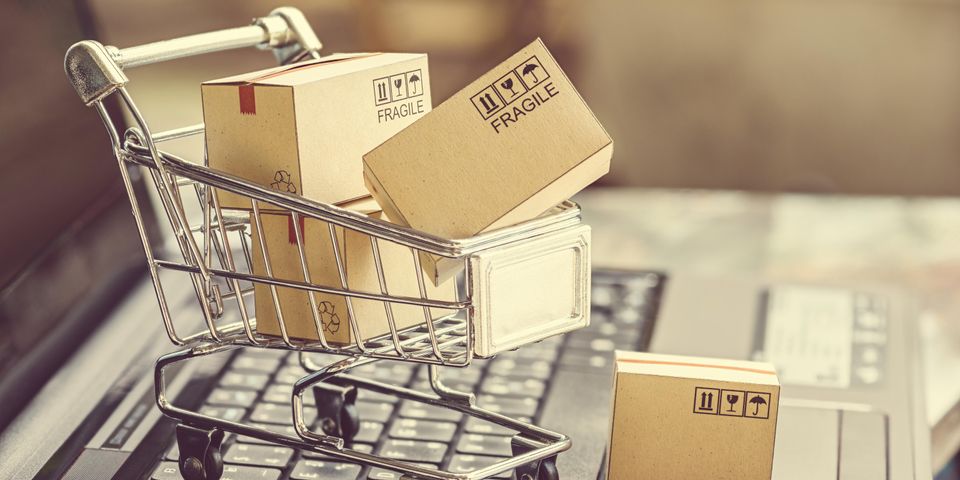How Safe is Online Shopping?

In 2017, more than 1.6 billion people around the world shopped for goods online, driving global sales via e-retail to a whopping 2.3 trillion dollars (U.S.). Amazingly, this number is expected to nearly double in the next three years.* In short, online shopping has become a juggernaut that is just too big to ignore. As scores of once-stalwart big name retailers like Sears, K-Mart and Toys ‘R’ Us are either scaling back their locations or closing their doors completely, it’s clear that “brick and mortar” is increasingly being replaced by “click and order.”
The huge shift toward shopping on the internet seems to suggest that consumers have a high level of confidence in the safety and security of their online transactions. But in this age of near-constant news stories of cyber-hacking and data compromise, exactly how safe is online shopping? The good news is that most experts agree that the e-retail environment is, in fact, relatively safe and that you are more likely to have your credit card information compromised over the phone, in a restaurant or through the mail than you are on the web.
Still, the old adage “better safe than sorry” applies, so here are a few tips to help make sure your online shopping activities don’t bring you more than you bargained for.
Safe Shopping
- Go with what you know. Only visit websites of brands that you know and are familiar with. Be vigilant. Look for clues to a website’s authenticity. Often, misspellings, poor grammar, and a site design that is just plain ugly are top indicators that you are on a fraudulent website.
- What’s in a (domain) name? Legitimate sites usually have short, clean domain names (e.g., www.amazon.com, www.rolex.com, www.tiffany.com), whereas fraudulent ones have long, overly hyphenated and unsightly names like Cheap-designer-name-handbags.com and Best-wholesale-boots-on-the-web.com. What’s more, they often mislead you by including the name of legitimate online stores or brands in their domain name. For example, Amazon0213.com or Denim-Jeans-Wholesale.com may seem okay at first glance, but after a closer look, they become suspicious.
- Be Wi-Fi wary. Shopping using Wi-Fi hotspots (such as those found in coffee shops or airports) should be avoided. These public Wi-Fi networks are fertile ground for hackers to steal your information.
- Avoid going viral. Before attempting ANY online activity, it is important to have anti-virus and anti-malware software installed on your computer. Malwarebytes is a popular (and free) choice.
- No kidding around. Make sure your kids are unable to access your online accounts or credit card and bank account information. Although this would seem like a no-brainer, there have been many incidents where kids inadvertently (and maybe not so inadvertently) racked up thousands of dollars of purchases on their parents’ cards.
Checkout Checklist
- The bare minimum. Only give the necessary information that is required to complete your online purchase. If a question or uncertainty regarding your transaction leads to a phone call with a customer service agent, keep in mind that personal information should NEVER be shared over the phone unless you initiated the call. Also, if you receive any unsolicited requests for your passwords, or bank account or credit card information, do not reply to them.
- Rely on your pay pals. Payments should only be made using methods that have a solid track record such as PayPal or Amazon’s Log-in-and-Pay. It is a good idea to use credit cards whenever possible, since your purchases will (in most cases) be insured. If you suspect your credit card information may have been compromised (either via a fraudulent website or a suspicious email), contact your credit card company right away.
Wrapping it up
- Log off before you rush off. Once you are done with your online shopping spree, don’t forget to log off. This is especially important if other people have access to your computer or if you have used a computer in a public place, such as a library or Wi-Fi network.
- Keep the receipts. Be sure to print and save all receipts and records of your online transactions.
- Scrutinize your statements. Make a habit of going through your credit card statements each month. Be thorough. Report any unauthorized charges or suspicious activity right away.
*SOURCE: www.statista.com
###
About the Business
Have a question? Ask the experts!
Send your question

